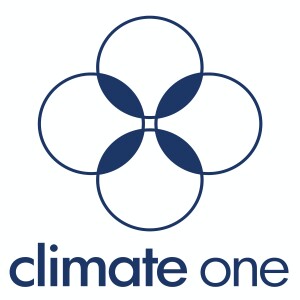
A carbon offset is a credit – a way to offset a unit of pollution created in one place by, say, planting a tree, or otherwise sequestering carbon, somewhere else. But in the race to bring carbon emissions to zero, are offsets a legitimate tool, or a delusion that allows heavy emitters a way out of taking real action?
“I just need to recruit everybody to make sure the forests remain forests and the farmlands have as many trees as possible,” says Pauline Kalunda, Executive Director of Ecotrust Uganda,
a non-governmental conservation organization in Uganda. She uses money from carbon offsets purchased in wealthy countries to help build environmental resilience at the community level. Buying offsets can help fund carbon-reduction projects in developing economies with limited funding – but they don’t help reduce dirty air back home.
“We ultimately need to get to a point where it is really, really expensive to pollute so that people pollute a lot less,” maintains Kahlil Baker, Executive Director of Taking Root, a Canada-based group which also works with the offset market to promote economic development among smallholder farmers in Nicaragua. Voluntary offsets are great for eco-conscious consumers who want to ease their climate guilt. Do they run the risk of letting individuals think they’re off the hook for their carbon sins?
“I’m a lot less worried about offsets from individuals than I am about Chevron offsetting,” says Zoe Cina-Sklar, a climate justice campaigner with the advocacy group Amazon Watch. She worries about corporations and other large polluters using offsets to avoid accountability under state climate policies.
Barbara Haya, a research fellow at UC Berkeley’s Center for Environmental Public Policy, who studies California’s offsets program, echoes this worry. “We’re allowing businesses in California like Chevron and Phillips and other large emitters to continue to emit,” she claims, “because they're buying these credits that many of which don't actually represent real emissions reductions.”
But Rajinder Sahota, who leads the Cap and Trade program for the California Air Resources Board, disagrees with the takeaways of Haya’s research. “The offsets don't play a specific line item in reducing emissions towards our target,” she counters, “they are a compliance currency under the cap and trade program.”
Ultimately, carbon offsets work best, as Derik Broekhoff from the Stockholm Environmental Institute puts it, as the icing on the cake and not the cake itself. “The advice for voluntary offset has always been reduce your own emissions first,” he suggests, “and then turn to offsets as a kind of additional even charitable contribution that you can make towards both helping the climate and making the world a better place.”
Guests (in order of appearance):
Pauline Kalunda, Executive Director, Ecotrust Uganda
Kahlil Baker, Executive Director, Taking Root
Pennie Opal Plant, Co-Founder, Idle No More Bay Area
Zoe Cina-Sklar, Climate Justice Campaigner, Amazon Watch
Barbara Haya, Research Fellow, Center for Environmental Public Policy
Rajinder Sahota, Assistant Division Chief, Industrial Strategies Division, California Air Resources Board
Derik Broekhoff, Senior Scientist, Stockholm Environmental Institute
More Episodes
 2024-10-25
2024-10-25
 2024-10-18
2024-10-18
 2024-10-04
2024-10-04
 2024-09-27
2024-09-27
 2024-09-13
2024-09-13
 2024-08-23
2024-08-23
 2024-08-02
2024-08-02
 2024-07-26
2024-07-26
 2024-07-21
2024-07-21
 2024-07-12
2024-07-12
Create your
podcast in
minutes
- Full-featured podcast site
- Unlimited storage and bandwidth
- Comprehensive podcast stats
- Distribute to Apple Podcasts, Spotify, and more
- Make money with your podcast
It is Free
- Privacy Policy
- Cookie Policy
- Terms of Use
- Consent Preferences
- Copyright © 2015-2024 Podbean.com





